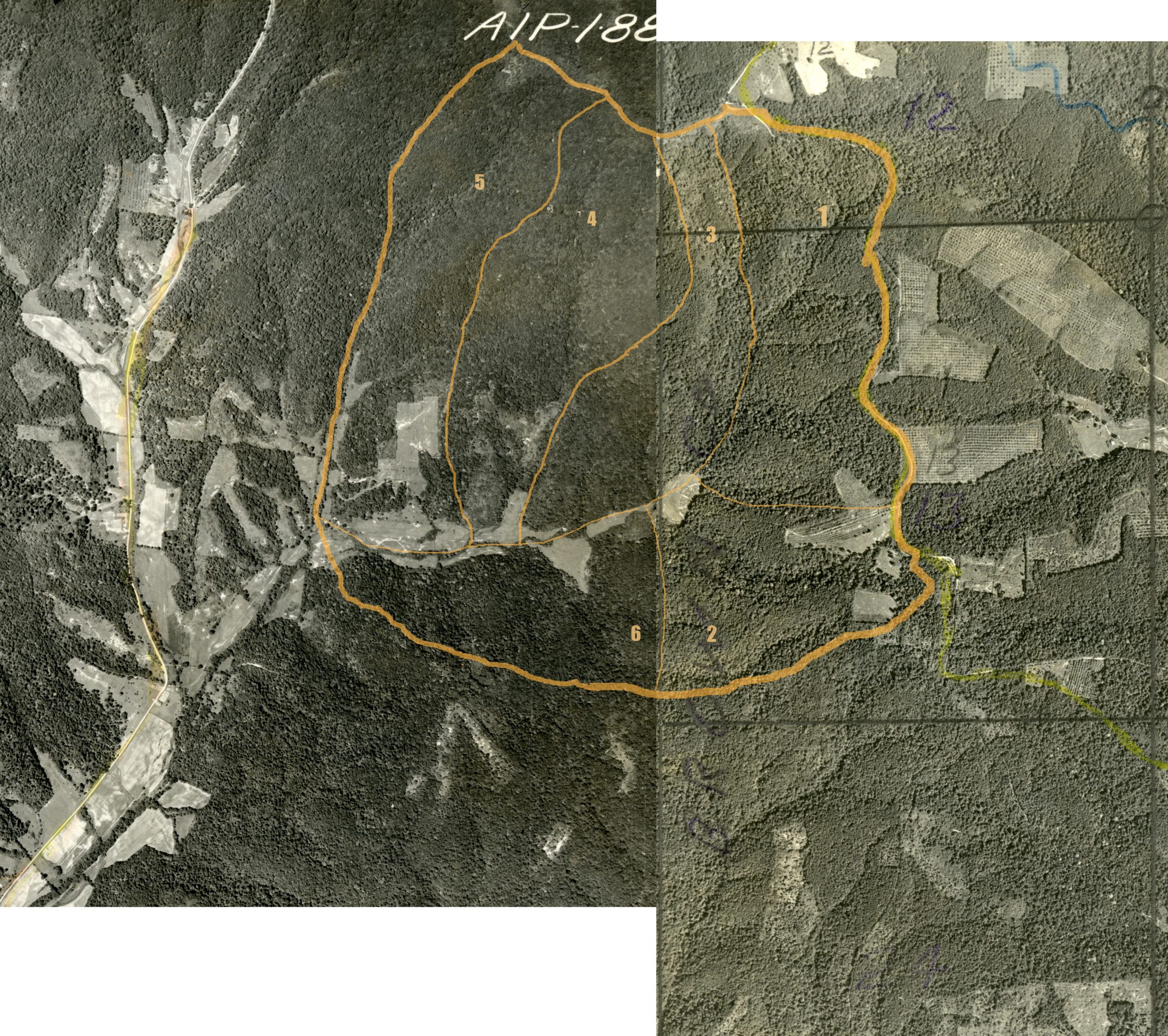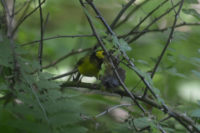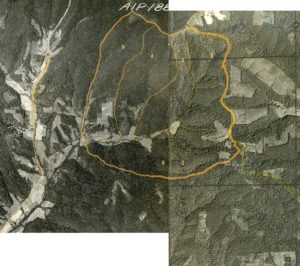Did you contact Governor Holcomb to express your opposition to the logging at Yellowwood, only to receive a letter back from … the head of the Indiana Division of Forestry?
We disagree heartily with many assertions in the letter. Below, IFA Executive Director Jeff Stant addresses every point in this six-page rebuttal. Here’s Seifert’s letter, with highlights of Stant’s rebuttal inserted in blue. If you’ve got the time, write back to the Governor with these counterpoints in mind!
—-
Fall, 2017
Dear Hoosier Citizen:
Thank you for your interest in the proposed resource management plan for a portion of the Yellowwood State Forest’s Back Country Area (BCA).
The DNR Division of Forestry has managed state forest lands for more than 100 years, during which time once abused and abandoned land has been restored to nearly 160,000 acres of diverse and healthy forests.
This includes the 2,900-acre Yellowwood State Forest Back Country Area. When the state acquired this land in the 1950s, it was a combination of cutover woodland, fruit orchards, farm fields and young growth. The husbandry practices of the Department of Natural Resources Forestry division restored this area, and in 1981, it received backcountry designation. At that time, the state announced timber management would continue under harvesting guidelines limited to the use of single-tree selection.

This is a mischaracterization of the condition of much of the land that was acquired to become state forest and part of this Back Country Area. At least 75% of this area was closed canopy forest according to aerial photographs taken in 1939 (below). It was by no means “cutover woodland, fruit orchards, etc.
Single-tree selection, along with best management practices for erosion control, will be used for this harvest, just as it has been utilized for the previous 13 Morgan Monroe Back Country Area harvests, including 2011 and 2013. This means that 5 to 7 trees per acre may be removed. Single-tree selection guidelines ensure the vast majority of trees, including some big trees, will be untouched and less stressed from current overcrowding.
The assertion that only 5 to 7 trees is not borne out by the trees that have just been marked to be logged in the timber sale. In some areas there are fewer than 5 to 7 trees marked to be cut, but in other areas, most notably on the flat ridge top in the center of Tract 3 where the forest canopy is more than 80 feet off the ground, a rarity anywhere in the state forests today–the trees marked to be cut are concentrated in groups of 20 to 40 per acre. Here, removing this many marked trees will substantively change the undisturbed character of the forest, replacing its deep green shade with much more sunlight and making it drier and hotter.
The removal will focus on disease, insect, overcrowding, and the overall health of individual trees and the entire forest. The long-term goal is to maintain a process that regenerates new seedlings by allowing sunlight to reach the forest floor.
Salvage cutting will remove as many ash trees, dead or alive, that can be reached, as well as dead or declining tulip poplars, black oaks, and scarlet oaks, to enlarge many openings that already exist (as explained in the DOF’s harvest plans). Many trees will be marred by skidders dragging logs from far corners across the forest to the main trails that will become gravel roads. Many pristine areas of forest floor will be scraped bare as well, providing fertile grounds for nonnative invasive plants such as Japanese Stiltgrass to grow quickly aided by more sunlight from the increase in canopy openings.
The BCA guidelines restrict any timber to: “single tree selection of mature, damaged, or diseased trees. Yet hundreds of healthy smaller trees, 8-20 inches in diameter that are far from being mature, are marked to be cut.
Forests thin themselves naturally. Thus the objective to improve overall health and regeneration and leave trees less stressed from overcrowding violates the primary objective of the BCA guidelines to manage this forest as a “primitive rugged” “natural woodland ecosystem” where “wilderness seekers” will be “visiting a forested area looking much the same as it may have appeared a century and a half ago” (as stated in the 1981 BCA designation publicity). Rather than truncating the forests’ natural processes, the guidelines require that timbering be compatible with this condition and let visitors see it.
The DNR, with the U.S. Fish & Wildlife Service, and independent researchers have conducted research and studies about the impacts of the harvest to wildlife. Rare and endangered species like the timber rattlesnake, hooded warbler, worm-eating warbler, black-and-white warbler, and Indiana bat would benefit from conditions created by periodic thinning that includes small openings and sunny canopy gaps of the area’s current closed canopy.
The DoF has done no recent examination of the plants and animals that inhabit these forests. They have disregarded substantive site-specific information about rare animals and plants in these tracts that has been submitted by top scientists via the IFA’s Ecoblitz. A simple check of the Indiana Natural Heritage Data Base for the existence of rare, threatened or endangered species on these tracts is inadequate because the vast majority of state forest tracts have never been examined for RTE species. This database is a collection of locations where RTE species have been reported, and cannot be relied upon to decide what species of wildlife are inhabiting a tract of state forest that may be logged.
A long-term research project in Morgan-Monroe and Yellowwood forests the Hardwood Ecosystem Experiment (HEE) has produced these findings:
The number and species diversity of Neotropical breeding birds are significantly greater in harvested treatments relative to unharvested controls due to increased habitat diversification provided by the creation of young forest habitat.
Birds that use mature forest for nesting frequently use regenerating forest openings to forage, including many species of conservation concern associated with mature forest interiors, including the cerulean warbler, worm-eating warbler, and hooded warbler. Other mature forest nesting species have also been found to frequent these recent clearcuts, including ovenbirds, wood thrushes, and scarlet tanagers.
Single-tree selection did not affect the abundance of any Neotropical breeding bird analyzed by HEE researchers including all species studied that nest in forest interiors.
Researchers have concluded the cerulean warbler a state endangered species – does not avoid recently harvested areas.
 The statement that these bird species- the hooded warbler, worm-eating warbler, black-and-white warbler, etc.- will benefit from logging ignores the fact that every one of these rare, threatened and endangered (“RTE”) species has been documented to be in Tract 3, which is the portion of this proposed logging area inventoried in the Ecoblitz. Furthermore, these animals aren’t just passing through. The Ecoblitz has documented the breeding success of several of these species in the undisturbed forests of these tracts that will be logged.
The statement that these bird species- the hooded warbler, worm-eating warbler, black-and-white warbler, etc.- will benefit from logging ignores the fact that every one of these rare, threatened and endangered (“RTE”) species has been documented to be in Tract 3, which is the portion of this proposed logging area inventoried in the Ecoblitz. Furthermore, these animals aren’t just passing through. The Ecoblitz has documented the breeding success of several of these species in the undisturbed forests of these tracts that will be logged.
A study of neotropical forest birds in Indiana done in 2000 concluded: “When combined with other deleterious effects of forest fragmentation such as reduced habitat availability and increased nest predation, brood parasitism may seriously threaten neotropical migrant populations. Management activities presently occurring in state and national forests, such as timber harvests and the creation and maintenance of forest openings, increase the area of internal edge habitat. Such habitat alteration may reduce nesting success and thus detract from this landscape’s value as a source for populations of neotropical migrant birds.” [see full text of IFA’s rebuttal for more detail and references].
No bat species using state forests has been found to avoid harvested areas, including the federally endangered Indiana bat and threatened northern long-eared bat.
Researchers have found evidence that most bat species using state forests also benefit from timber harvesting in some way. For example, researchers found Indiana bat maternity roosts were preferentially located within canopy gaps and openings, and most of these roosts were within areas recently affected by harvesting.
At Morgan-Monroe and Yellowwood State Forests, researchers have intensively studied Indiana bat roosting and foraging within three separate maternity colonies. Each colony includes recently harvested areas where researchers have documented high levels of nocturnal (foraging) and daytime (roosting) use during the summer maternity season.
Approximately half of the known northern long-eared bat (federally threatened) maternity roosts on state forests occur within recently harvested areas.
Plenty of reproducing Indiana Bats have been found in the undisturbed backcountry forest. A large number of dead tulip poplars and other snags make this forest good habitat for additional maternity roosts of this nationally endangered animal in a report submitted last year to the DOF. It’s not noted here but the state’s Hardwood Ecosystem Experiment (HEE) actually found a maternity roost of Indiana Bats with 90 females and young this year in the BCA between the western boundary of the Ecoblitz area and Low Gap Road: an area that has not been logged.
Mr. Seifert asserts that half of known Northern long-eared bat maternity roosts occur in recently harvested areas (without explaining what “recently harvested” means), but ignores the fact that three of these nationally threatened bats have been found in the old forest in the Ecoblitz area, and two of them were lactating females. Also not mentioned is that IFA mammalogists have informed DOF netting results and acoustic data indicate that this older forest is harboring seven different bat species, including–the Eastern Pipestrelle and Little Brown Bat–whose numbers have dropped by 71% and 90% respectively in winter surveys by the Indiana Division of Fish and Wildlife, thus making the viability of their summer forest roosting habitat that much more important.
Additional research from HEE may be found at online along with the number of species recorded in a managed forest.
DNR Forestry is staffed by professional foresters and other scientists with a combined 500-plus years of field experience. The division is evaluated annually by two forest certification organizations. For 10 consecutive years, these two independent audits have certified that DNR Forestry meets nationally and internationally recognized standards for sustainable, well-managed forests.
Mr. Seifert touts the audits that certify the DOF’s practice of sustainable forestry in its logging of the state forests. Although we are alarmed at the 400 percent increase in logging of the state forests that has occurred since Mr. Seifert took over the DOF in 2005, we agree that the DOF’s practice of single tree selective forestry in many areas of the state forest is more sustainable and less destructive to the natural forest ecosystem than other forms of timbering such as clearcutting.
However, for at least the past five years, these audits have recommended that the DOF manage the state forests to let more of the underrepresented old-growth condition that would occur naturally, return to these forests. Specifically, on page 75 of the Forest Stewardship Council (FSC) audit which applies to all of the state forests, the FSC states:
6.3.a. Landscape-scale indicators 6.3.a.1 The forest owner or manager maintains, enhances, and/or restores under-represented successional stages in the FMU that would naturally occur on the types of sites found on the FMU. Where old growth of different community types that would naturally occur in the forest are under-represented in the landscape relative to natural conditions, a portion of the forest is managed to enhance and/or restore old-growth characteristics.
The DNR Forestry staff is dedicated to maintaining the health of the state’s forests. This harvest plan is directly in line with other timber management plans that have led to healthier backcountry areas.
The people’s will should be considered–and the multiple-use philosophy abided by–in the treatment of our state forests.
Over time, the DNR’s annual harvest has increased from 0.3 percent of the merchantable trees to 1.2 percent. That is a 300 percent increase and equates to taking less than two trees for every 100 in the state forest. This trend also means that the once abandoned and cutover lands assembled as the Indiana State Forest system have done well and have grown exponentially to now enable sustainable timber benefits for Hoosiers.
We continue to believe that the DOF should set aside more than the 4,000 acres of state forest currently set aside from logging out of the entire 158,378 acres of Indiana’s state forests to return to the old-growth condition. These acres comprise a mere 2.5% of the state forests. They are designated in small nature preserves usually less than 100 acres, HEE control areas and Indiana Bat hibernation sites spread across the state forests.
These 4,000 acres do not conserve the native biodiversity found in these forests on a viable scale. They are far below the 60,000 acres of state forest that was set aside from silviculture by the DOF prior to 2005. They are well below the acres of state forests set aside by states such as Michigan, Illinois, Wisconsin, Ohio, Pennsylvania, Maryland, and Connecticut.
The management plans for the three tracts proposed for active forest management can be found online.
Check out the Indiana Forest Alliance’s plan for 13 State Wild Areas state forest sections set aside from logging.
Sincerely,
John Seifert, State Forester
Sincerely,
Jeff Stant, Indiana Forest Alliance

